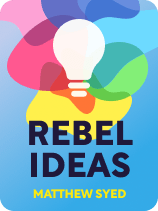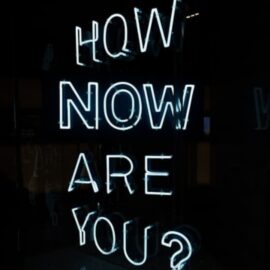

This article is an excerpt from the Shortform book guide to "Rebel Ideas" by Matthew Syed. Shortform has the world's best summaries and analyses of books you should be reading.
Like this article? Sign up for a free trial here.
What are the dangers of echo chambers? Why are larger groups even more susceptible to echo chambers?
Author Matthew Syed advocates for cognitive diversity in his book Rebel Ideas. In the book, he confirms the dangers of echo chambers, arguing that larger, more diverse groups can actually be more susceptible to forming echo chambers.
Keep reading to learn more about the dangers of echo chambers in large groups, according to Syed.
The Dangers of Echo Chambers
In his book Rebel Ideas, Matthew Syed explains the dangers of echo chambers, arguing that homogeneous groups are susceptible to forming them. Put simply, echo chambers filter out alternate views and undermine the group’s trust in those with different perspectives. Consequently, echo chambers support the development of increasingly extreme views.
Syed explains that one of the dangers of echo chambers is that people in an echo chamber are exposed only to evidence that confirms their preconceived views. For instance, studies show that Facebook creates political echo chambers because users are predominantly exposed to arguments defending views similar to their own.
(Shortform note: Experts point to many reasons why we prefer being surrounded by like-minded people, often leading to the development of echo chambers. First, such individuals are likely to validate our opinions, making us more confident. Moreover, we naturally assume that like-minded people are more likely to like us, which makes us seek them out. Finally, because we typically have positive feelings associated with our own views, we project these positive feelings onto other people when we find out they think the way we do.)
Yet, Syed argues that it’s misguided to think echo chambers filter out all alternate ideas. Rather, he suggests that they often present such ideas, but invalidate them by impugning the character of their proponents. For example, a progressive radio host might discuss a conservative policy, then discredit it by attacking its proponents.
In this manner, another danger of echo chambers is that they encourage ad hominem attacks—attacks on the people presenting the views, rather than the views themselves—that destroy trust in our adversaries. When those in echo chambers hear alternate perspectives, they grow more confident in their own perspective, since they don’t trust the sources of alternate views in the first place.
(Shortform note: Although many think that echo chambers should always be avoided because of the dangers they pose, some philosophers argue that echo chambers aren’t inherently harmful. Rather, they argue that only echo chambers full of unreliable information are harmful. For example, while echo chambers circulating fake news are harmful, echo chambers that circulate empirically verified health advice need not be. In fact, the latter is actually desirable because they insulate us from unreliable information.)
Echo Chambers in Large Groups: Fine-Grain Assorting
Further, Syed observes that large, diverse social networks seem less susceptible to the dangers of echo chambers at first blush. However, he argues that the opposite is true: Large, diverse networks allow us room to specifically seek out like-minded individuals within them. This process, known as fine-grain assorting, creates diverse networks that, ironically, are full of echo chambers.
To illustrate, Syed examines Angela Bahns’s 2009 study of universities in Kansas. Among them was Kansas University (KU), which had a diverse population of 27,000, as well as five smaller, less diverse colleges with an average population of 1,000. Despite KU’s diverse population, the study revealed that KU students’ social networks were the most homogeneous.
(Shortform note: In addition to finding that students at large, diverse schools had the most homogeneous social networks, Bahns’s study reported that students in more diverse social networks reported having closer relationships. This finding opens the possibility that closer friendships develop among diverse students, rather than similar ones.)
In his discussion of the study, Syed notes that although KU is diverse, its size allowed students to find other like-minded individuals. So, although KU is the most diverse university, its social networks are the least diverse.
By contrast, although the smaller universities were less diverse on the whole, students had fewer opportunities to find peers exactly like themselves. Accordingly, they had to accept some degree of diversity in their social networks, however minimal. Thus, these smaller, less diverse universities actually had the most diverse social networks.
(Shortform note: Researchers have proposed and tested strategies for promoting diversity and inclusion at U.S. universities. For example, they note that social norms messaging—messages that explicitly affirm the value of inclusion, whether in the form of posters or videos—promotes inclusive behavior. Additionally, they find that intergroup contact intervention—intentionally creating diverse classroom groups—leads to long-term increases in inclusive behavior.)
Example: The Case of Derek Black
To demonstrate this paradoxical result, Syed discusses the case of Derek Black, a formerly prominent white supremacist. Syed argues that, although Black grew up in an echo chamber—his family was heavily involved in the Ku Klux Klan (KKK)—his experience at a small university forced him to encounter diverse perspectives, eventually leading him to renounce white supremacy.
(Shortform note: In one respect, Black’s experience is representative of a broader trend: Research finds that experiencing higher education has a significant correlation with changes in students’ political views. However, because students who attend college themselves tend to be from higher-income families, researchers caution that there might be other variables impacting these changes. In other words, it’s not clear that college causes students’ political views to change, despite being correlated with a change in political views.)
In particular, Syed notes that Black quickly met Matthew Stevenson, an Orthodox Jew who also attended New College in Florida. Even after learning of Black’s association with white supremacy, Stevenson didn’t abandon him; rather, he invited Black over for weekly Shabbat dinners, where diverse groups of people shared a meal.
Although Black’s upbringing had eroded his trust in those outside of white supremacist circles, Syed claims that Black’s relationship with Stevenson slowly restored this trust. He became more receptive to alternate views and decided to engage seriously with arguments undermining white supremacy. Ultimately, this led Black to renounce his racist beliefs and with them the echo chamber of his upbringing.
(Shortform note: Black wrote an article, published by the Southern Poverty Law Center in 2013, detailing his decision to abandon white nationalism. In particular, Black asserted his newfound view that white nationalism was a movement primarily committed to retaining power for white Americans—and thus committed to oppressing racial and ethnic minorities—rather than one founded on legitimate science.)

———End of Preview———
Like what you just read? Read the rest of the world's best book summary and analysis of Matthew Syed's "Rebel Ideas" at Shortform.
Here's what you'll find in our full Rebel Ideas summary:
- Why diverse groups are more collectively intelligent than homogeneous ones
- Actionable advice for creating cognitively diverse groups
- Why systems shouldn't be designed to fit the "average" person






